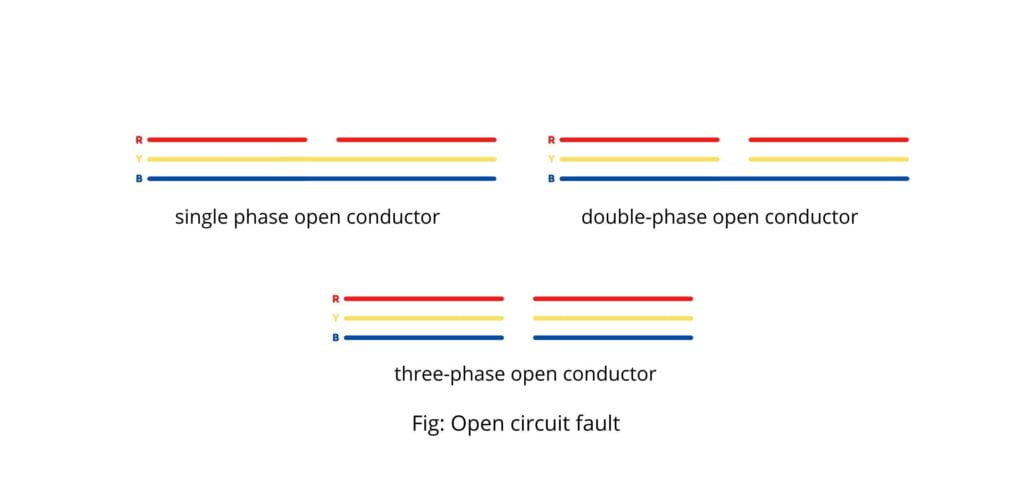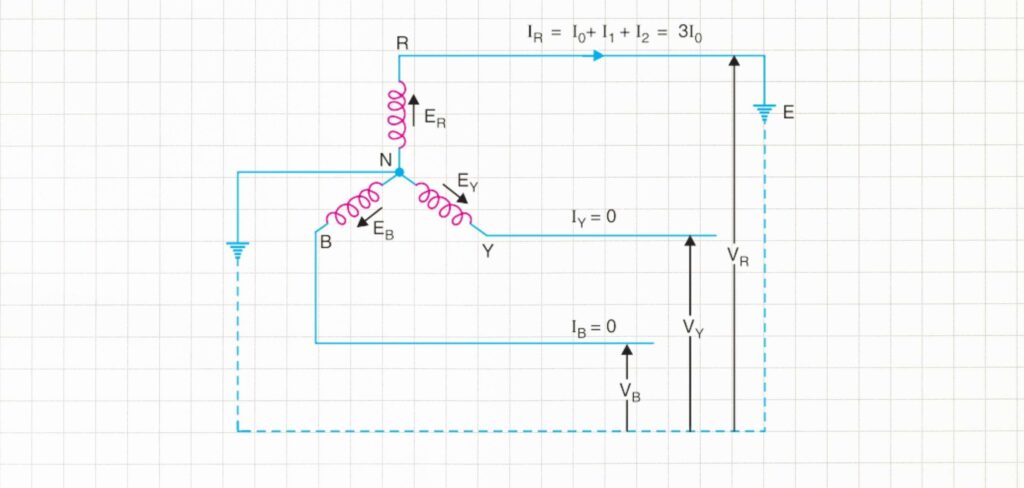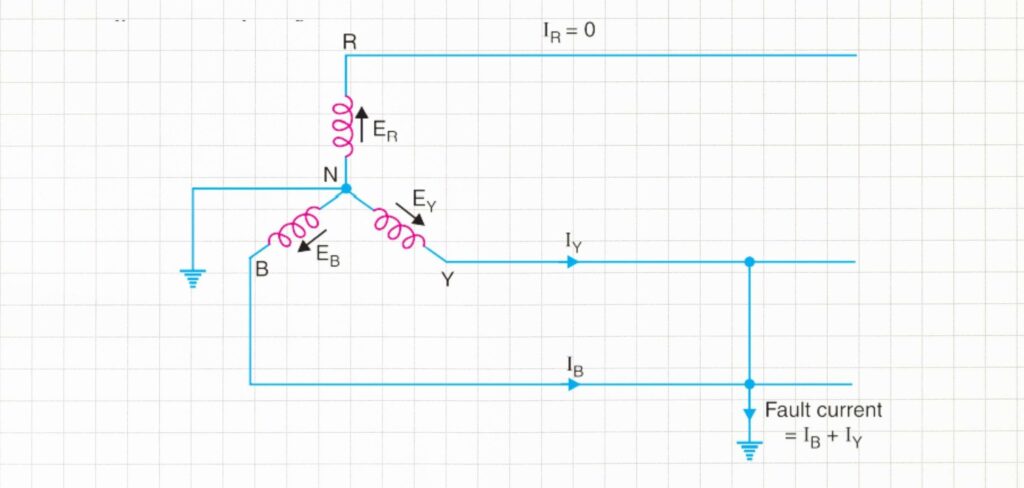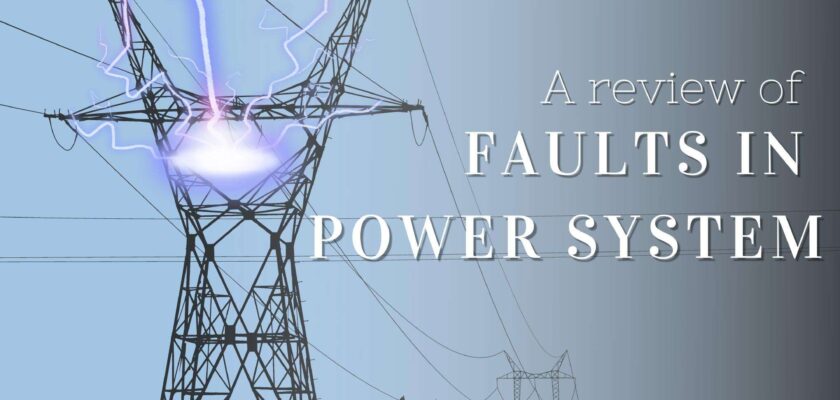What is Power System Fault?
A power system fault is an abnormal condition that involves the electrical failure of system equipment operating at one of the system’s primary voltages. Most of the faults on the power system lead to a short-circuit condition. When such a condition occurs, a heavy current (called short circuit current) flows through the equipment, causing considerable damage to the equipment and interruption of service to the consumers.
The most common reason for a power system failure is insulation failure, flashover, or physical damage, such as wires being blown together in the wind or animals touching the wire. The fault causes excessive current, abnormal voltages, induced overvoltages on neighboring equipment, and other dangers to humans, animals, etc. Most faults on transmission lines of 115 kV and higher are caused by lightning, which results in the flashover of insulators.
Types of Faults in Power System
Mainly there are two types of faults that occur in the power system-
- Open Circuit Fault
- Short Circuit Fault
Open circuit fault
Open circuit faults are caused by the failure of one or two conductors. It may be categorized as
- Open Conductor Fault
- Two conductors Open Fault
- Three conductors Open Fault
We can understand those faults by the figure given below:

Short-Circuit Fault
The conductors of the different phases of the electrical system come into contact with each other via a power line, a transformer, or any other circuit element, resulting in a large current flowing in one or two phases of the system. Which is categorized by
- Symmetrical Fault
- Unsymmetrical Fault
Symmetrical Fault
The fault on a power system that gives rise to a Symmetrical fault current (i.e. equal fault current in the lines with 120° displacement) is called a Symmetrical fault. The symmetrical fault occurs when all the three conductors of a 3-Φ line are brought together simultaneously into a short circuit condition.
Under symmetrical fault conditions the following points may be particularly noted:
- The symmetrical fault rarely occurs in practice as the majority of the faults are of unsymmetrical nature. However, symmetrical fault calculations are being discussed in this chapter to enable the reader to understand the problems that short circuit conditions present to the power system.
- The symmetrical fault is the most severe and imposes more heavy-duty on the circuit breaker.
Steps for Symmetrical Fault Calculations:
The procedure for the solution of such faults involves the following steps :
- Draw a single line diagram of the complete network indicating the rating, voltage, and percentage reactance of each element of the network.
- Choose a numerically convenient value of base kVA and convert all percentage reactances to this base value.
- Corresponding to the single line diagram of the network, draw the reactance diagram showing one phase of the system and the neutral. Indicate the %reactances on the base kVA in the reactance diagram. The transformer in the system should be represented by reactance in series.
- Find the total %reactance of the network up to the point of fault. Let it be X%.
- Find the full-load current corresponding to the selected base kVA and the normal system voltage at the fault point. Let it be I.
- Then various short-circuit calculations are :
Short-circuit current, Isc = I × (100/ %X)
Short-circuit kVA = Base kVA × (100/ %X)
Unsymmetrical Fault
Those faults on the power system which give rise to unsymmetrical fault currents (i.e. unequal fault currents in the lines with unequal phase displacement) are known as unsymmetrical faults.
Most of the faults that occur on power systems are unsymmetrical faults, which may consist of unsymmetrical short circuits, unsymmetrical faults through impedances, or open conductors. There are three ways in which unsymmetrical faults may occur in a power system:
- Single line to ground fault (L-G)
- Line to line fault (L-L)
- Double line to ground fault (L-L-G)
Single line to a ground fault
A single line of ground fault occurs when one conductor is dropped to the ground or contacts the neutral conductor. Seventy to eighty percent of all faults in the power system are single line-to-ground faults. Consider a 3-phase system with an earthed neutral. Let a single line-to-ground fault occur on the red phase as shown in Fig. (a).
It is clear from this figure that :
*VR = 0 and IB=IY = 0

Line–to–Line Fault
Short circuits occur when two conductors are shorted together. These faults are usually caused by heavy winds. Strong winds swing the line conductors, which may touch each other and cause a short circuit. The probability of such faults is about 15 to 20%. Line–to–Line Fault Consider a line-to-line fault between the blue (B) and yellow (Y) lines as shown in Fig. (b). The conditions created by this fault lead to VY=VB; IR=0 and IY + IB = 0

Double line to a ground fault
In a double line-to-ground fault, the two lines come in contact with each other along with the ground. The probability of such types of faults is nearly 10 %. Consider the double line-to-ground fault involving Y–B lines and earth as shown in Fig.(c).The conditions created by this fault lead to : IR = 0; VB = VY =0


